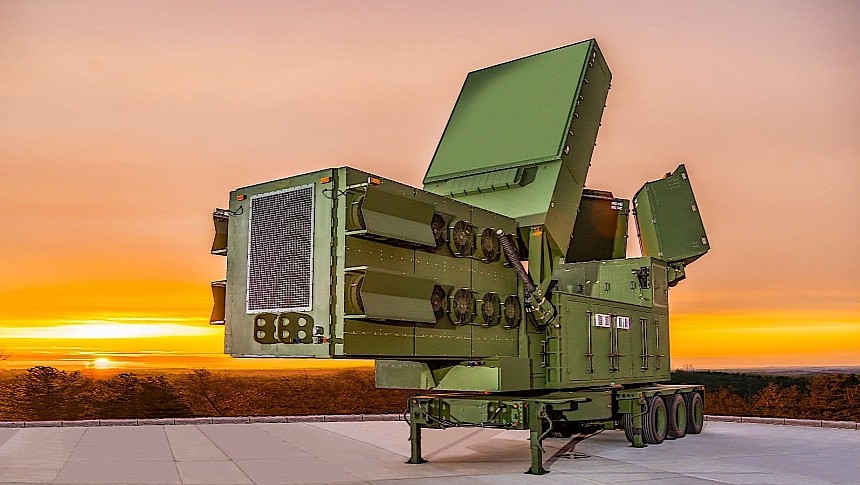Offensive capabilities are crucial to winning any war, and in our day and age that means relying heavily on air power, no matter the form it takes: crewed or uncrewed aircraft, missiles, including hypersonic ones, and even drones. Yet for every such advanced offensive capabilities, chances are the opposing side will develop means to counter them.
For the U.S. Army the most impressive anti-aircraft and anti-missile tool of recent years is called Lower Tier Air and Missile Defense Sensor, or LTAMDS. It's a system being developed by defense contractor Raytheon under a contract awarded back in 2019, and it just passed a crucial live fire test.
LTAMDS is described by its maker as the "world's most advanced and highly capable air and missile defense radar." Bold words, but the things we know about it make it clear they are not empty words.
The tech has been developed to counter all sorts of aerial threats, but primarily those that fly faster than a mile a second. It consists of three antenna arrays (the primary at the front of the radar and two additional ones at the back), giving the system a 360-degree coverage and the ability to detect and engage multiple threats at the same time, no matter where they are coming from.
When deployed, the thing is about the same size as the Patriot Air and Missile Defense System, but packs twice the firepower. It has been designed to work both with the Patriot and with the Integrated Air and Missile Defense system.
The LTAMDS came up on our radar because Raytheon just announced the completion of a live-fire engagement test against an actual target. We're not told where and when it happened, but we do know part of what transpired.
An unspecified cruise missile surrogate was fired on what the U.S. Army calls a threat trajectory, and was picked up by the LTAMDS. Once acquired, data about its location and movement was sent to the Integrated Battle Command System, where the decision to launch a PAC-3 missile for interception purposes was taken. LTAMDS then guided the missile all the way to its target.
Raytheon doesn't say what happened next, but given how it calls the test a success, it's easy to assume the target was destroyed.
Further tests will continue until the end of the year, and then further into 2024. Raytheon and the U.S. Army plan to have the LTAMDS fully operational by the end of next year.
At the time of writing there are six such radars ready to be deployed by the American military, as they are all still undergoing "simultaneous testing at various government and Raytheon test sites." They are all the first examples in a new family of such tech called GhostEye.
LTAMDS is described by its maker as the "world's most advanced and highly capable air and missile defense radar." Bold words, but the things we know about it make it clear they are not empty words.
The tech has been developed to counter all sorts of aerial threats, but primarily those that fly faster than a mile a second. It consists of three antenna arrays (the primary at the front of the radar and two additional ones at the back), giving the system a 360-degree coverage and the ability to detect and engage multiple threats at the same time, no matter where they are coming from.
When deployed, the thing is about the same size as the Patriot Air and Missile Defense System, but packs twice the firepower. It has been designed to work both with the Patriot and with the Integrated Air and Missile Defense system.
The LTAMDS came up on our radar because Raytheon just announced the completion of a live-fire engagement test against an actual target. We're not told where and when it happened, but we do know part of what transpired.
An unspecified cruise missile surrogate was fired on what the U.S. Army calls a threat trajectory, and was picked up by the LTAMDS. Once acquired, data about its location and movement was sent to the Integrated Battle Command System, where the decision to launch a PAC-3 missile for interception purposes was taken. LTAMDS then guided the missile all the way to its target.
Raytheon doesn't say what happened next, but given how it calls the test a success, it's easy to assume the target was destroyed.
Further tests will continue until the end of the year, and then further into 2024. Raytheon and the U.S. Army plan to have the LTAMDS fully operational by the end of next year.
At the time of writing there are six such radars ready to be deployed by the American military, as they are all still undergoing "simultaneous testing at various government and Raytheon test sites." They are all the first examples in a new family of such tech called GhostEye.






